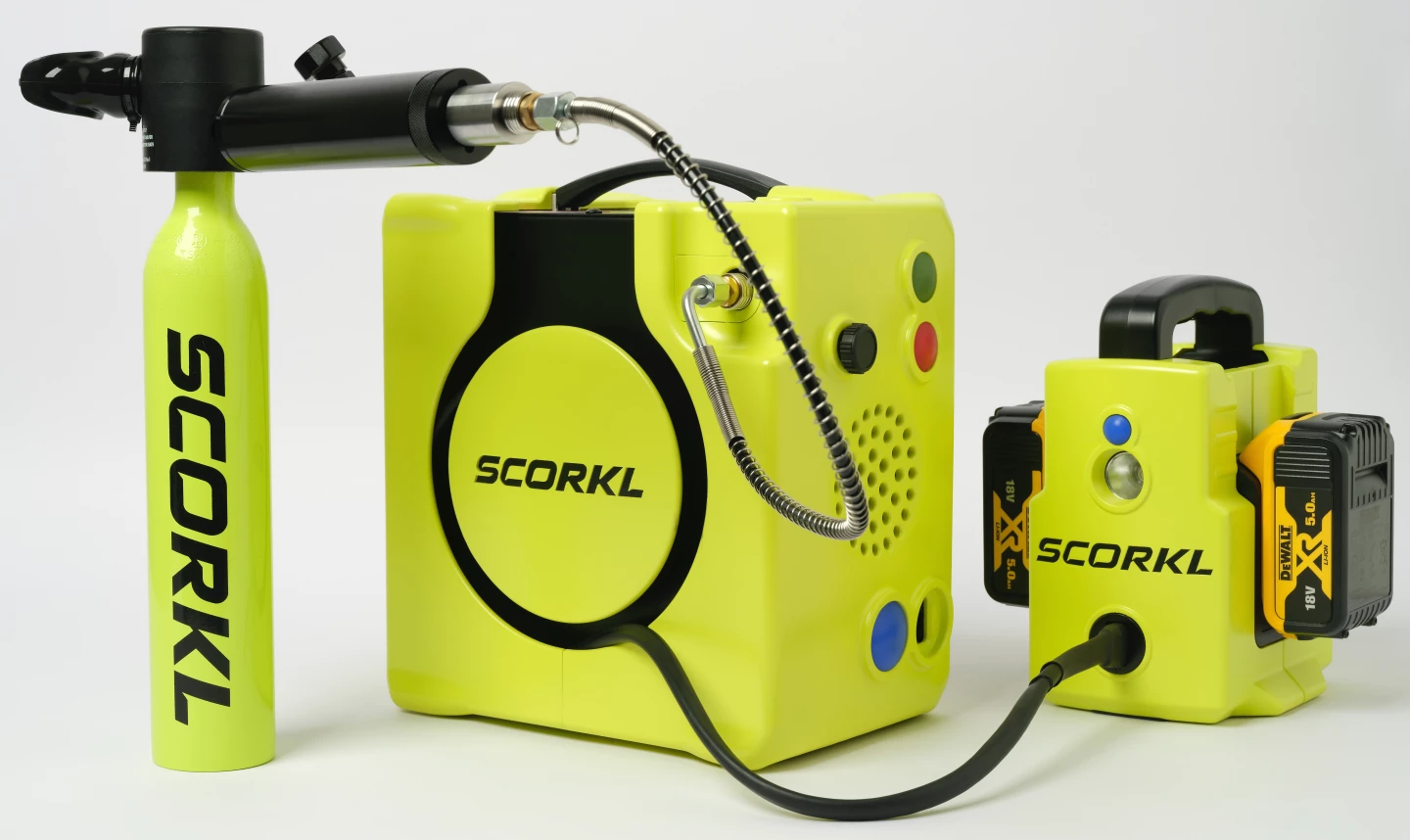Six years ago we told you about the Australian-designed Scorkl, a mini compressed air tank that allows users to breathe underwater for up to 10 minutes. For easier on-the-spot refills, the 2.0 version can now be ordered with an electric air compressor and a "battery pack."
To recap our previous coverage, the Scorkl itself is a compact air cylinder with an attached regulator and pressure gauge. It's small and light enough that instead of being worn on the diver's back, it simply hangs down from their mouth as they swim.
Users refill the device by hooking it up to either a traditional dive-store air compressor, a conventional full-size pressurized scuba tank, or an optional system-specific hand pump. The Scorkl 2.0 system, which is currently on Kickstarter, offers another alternative – a small electric air compressor.
To utilize it, users just plug the compressor into a regular wall-type outlet, connect it to the Scorkl cylinder that needs refilling, then press a single button to set it going. It can also be powered by a car or boat battery, or by an optional battery pack.
The latter unit doesn't contain a battery of its own, but instead serves as an adapter for one or two third-party 18-volt power tool batteries. It's compatible with Milwaukie, Makita, Bosch and DeWalt batteries, which the user has to supply. There's currently no word on how many refills one or two fully charged batteries will provide.

Of course, safety is always a concern with products like the Scorkl, which allow people to perform potentially dangerous activities without formal training.
Well, as far as decompression sickness (aka the bends) goes, Scorkl inventor David Hallamore tells us that due to the cylinder's limited air capacity, users aren't able to stay deep enough for long enough to be put at any significant risk. There still is another potential danger, however.
"Lung-expansion injuries are a real risk for Scorkl users," he says. "This is where damage to the lungs can occur if a user neglects to breathe continuously, or exhale, during ascent […] All Scorkl users receive this safety information in their user manuals, as well as follow-up emails upon delivery with links to the Safety and How to Use videos. There is also a big sticker right underneath the mouthpiece reminding the user of this risk each time they put the regulator into their mouth."
Assuming everything goes according to plan, a pledge of AUD$1,765 (about US$1,147) will get you a full package that includes a cylinder, compressor and battery pack – the planned retail price is US$1,747. Backers can also buy just one or two of the individual components for lower amounts.
The Scorkl 2.0 system is demonstrated in the video below.
Source: Kickstarter





